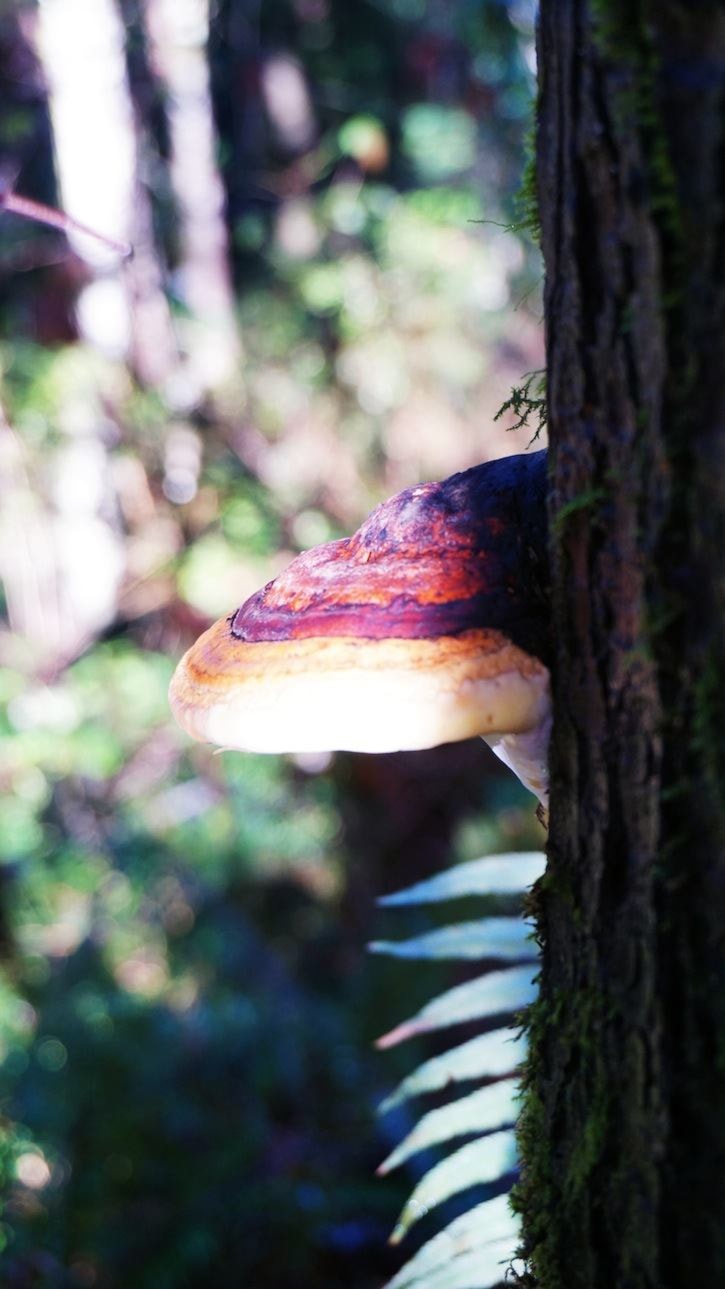Wild and Cultured: Musings from the Greenman
Mushrooms for health and wealth Part 2
Disclaimer: this article is meant to provoke insight into the many uses and mysteries of the mushrooms that live among us. It is not an invitation to experiment into the potentially lethal ingestion of some of the mushrooms mentioned, including but not limited to the Amanita Muscaria mentioned in last week's instalment. Consult with a experienced guide, and not merely a book or website when attempting to identify species for consumption.
Anyone acquainted with J.R.R. Tolkien's Lord of the Rings knows that Hobbits are especially fond of mushrooms. In the book The Fellowship of the Ring, Frodo had a run-in with Farmer Maggot after trespassing on his mushroom-abundant land as a child. Chased away by his hounds all the way to Bucklebury Ferry, Frodo quivers at the thought of stepping foot on old Maggot's land again. Long since over his grudge, Farmer Maggot gifts the hobbits with an ample supply of his famous mushrooms for their journey ahead.
Those who have experienced the mushroom madness has probably ventured forth beyond the pale of borders and fences to hunt the meaty mushrooms, which always seems to entail some kind of adventure or occasionally, misadventure.
This is perhaps one of the most exciting reasons to seek out the shroom afield (barring hounds and barb-wired fences). Mushroom hunting gets us out of our comfort zone, when the gnarly wet weather hits full-tilt in the Fall, and opens us toward exploring our home rain forests and stream beds in anticipation of bounty.
A pan of butter-fried wild mushrooms is hard for the inner-Hobbit to resist. Edible mushrooms should always be cooked to make them digestible, palatable and safe. They have thick cell walls that our digestive systems cannot easily break down in raw form. Cooking also releases their beneficial nutrients and destroys potentially harmful bacteria or toxic components that may be lurking in the mushroom or from the forest floor. Pan-frying poisonous mushrooms does not make them any more palatable and should be left well-alone.
Imagine where human culture would be without the fungi kingdom, which includes the yeasts that give us wines, beers and breads, the molds that we craft our cheeses with, and medicines like penicillin.
Beyond edibility, we have some of the most potent forms of natural, wild medicine available to us in the apothecary of a dying tree. Ötzi the Iceman, Europe's oldest preserved mummy, was found with two species of bracket or Polypore mushrooms strung together with leather. One of them was a tinder fungus which was part of a sophisticated fire making kit. The other was a birch fungus which is known for its antibacterial properties.
One especially powerful Polypore, the Reishi or Ganoderma Lucidum, known as Lingzhi in Asian medicine is considered 'the King of Herbs'. It also goes by the praiseworthy names of "Mushroom of Immortality" and "Elixir of Life". The author of an old 1596 Taoist herbal medicine book claimed that "it positively affects the life-energy, or Qi of the heart, repairing the chest area and benefiting those with a knotted and tight chest. Taken over a long period of time, agility of the body will not cease, and the years are lengthened to those of the Immortal Fairies."
Some of our own local medicinal polypores include our own 'reishi', Ganoderma oregonense, Turkey Tails, Artist Conks and Red-Belted Polypores. These bracket funguses are claimed to be anti-bacterial, anti-tumour and are said to treat illness related to immune system recovery and cancer amongst other things. They are usually taken in tea or tincture form.
A few species of the polypores are edible, such as the meaty sounding 'Hen of the Woods', Sheep Polypore, and the brightly coloured 'Chicken of the Woods', which grows in stacks of luminescent orange shelves that gather droplets of dew that taste like lemon juice. Dyers Polypore has been used to dye wool and other fabrics for centuries, in a wide range of rich colours.
One strange factoid is that fungi are more closely related to us and other species of the animal kingdom than are plants. At some point in our collective evolutionary history, plants split from the path before fungi did. This can be seen in the chitin, the fibrous substance that composes the cell walls of fungi, which is also found in the exoskeletons of anthropods, such as insects and crabs.
Mushrooms are the decomposers and recyclers of nature and acquire their nutrients, not through photosynthesis like plants but in one of three ways. Some are parasitic and feed off other living things, such as the Lobster mushroom. Others are saprobes, like some polypores and breakdown organic matter such as dead trees, and poop, recycling nature's waste. And others still are mycorrhizal, which team up with plants to communicate and exchange nutrients.
Mycelium is akin to the root system of a plant, (as the mushroom is like the fruit) and it's hairlike fibres are said to be intelligent. According to mushroom master, Paul Stamets in his book Mycelium Running: How Mushrooms Can Help Save the World, "mycelium is the neurological network of nature. Interlacing mosaics of mycelium infuse habitats with information-sharing membranes. These membranes are aware, react to change, and collectively have the long-term health of the host environment in mind...I see the mycelium as the Earth's natural Internet, a consciousness with which we might be able to communicate. Through cross-species interfacing, we may one day exchange information with these sentient cellular networks."
Mushrooms can help save the world!? Stay tuned for the final instalment of the mushroom series in Part 3.
